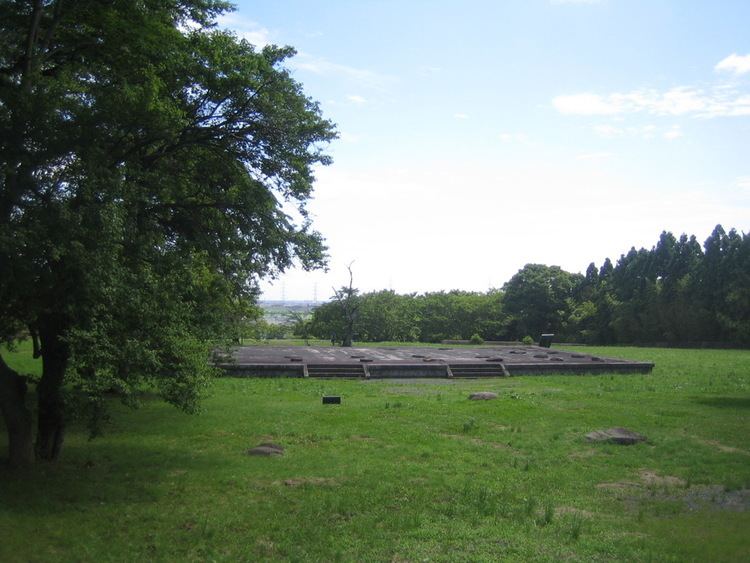Address Japan, 宮城県多賀城市鶴ケ谷1丁目6 | ||
 | ||
Similar Aoba Castle, Kokufu‑Tagajō Station, Tōhoku History Museum, Nihonmatsu Castle, Yamagata Castle | ||
Japanese rock gardens castles and temples
Taga-jō (多賀城) was a fort in Tōhoku established during the campaigns against the Emishi in the eighth century. It was located in what is now the modern city of Tagajō, Miyagi Prefecture. It served as the administrative centre of Mutsu Province. Bashō tells of his visit to the site in Oku no Hosomichi. The ruins of Taga-jō and its former temple have been designated a Special Historic Site (特別史跡).
Contents
- Japanese rock gardens castles and temples
- History
- Tagaj Fort
- Tagaj Temple Ruins
- Inscription
- Museum
- References
History
During the wars against the Emishi (蝦夷) in northeastern Honshū, the Japanese built a series of forts and stockades to provide strongholds and administrative centres as part of their conquest and colonization of the area. An inscription gives a foundation date of 724 for Tagajō. It became the administrative capital of Mutsu Province and one of the main bases for operations, alongside Akita Fort and Okachi Fort in Dewa Province. The military jurisdiction was termed Chinjufu Shogun (鎮守府), the northeastern equivalent to Dazaifu (太宰府) in the southwest. Tagajō was rebuilt after being sacked and burned by the Emishi in 780, before being badly damaged by the Jōgan tsunami of 869. The rise of Hiraizumi in the twelfth century saw its final demise.
Tagajō Fort
The fort at Tagajō was nearly three thousand foot square and was surrounded by an earthen wall more than two miles long. A number of administrative buildings on an elevation in the centre were enclosed within an inner earthen wall. Elsewhere at the site were storehouses and quarters for soldiers and craftsmen.
Tagajō Temple Ruins
Excavations to the southeast of the fort have uncovered the ruins of a temple, now known as Tagajō Haiji. Five buildings have been identified inside a large rectangular compound enclosed by an earthen wall.
Inscription
The Tsubo no Ishibumi (壺の碑) or Tagajōhi (多賀城碑) is a Nara period inscription that gives distances to Nara, the province of the Emishi, and a number of other regions. Matsuo Bashō (松尾 芭蕉) creatively recounts his viewing of the stele in Oku no Hosomichi (奥の細道), concluding 'there are seldom any certain vestiges of what has been, yet in this place there are wholly trustworthy memorials of events a millennium ago', and is moved to tears. In his account the monument functions as a poetic place or utamakura. In 1998 it was designated an Important Cultural Property.
Museum
The Tōhoku History Museum (東北歴史博物館) houses finds from the excavations as well as from other sites in Tōhoku.
